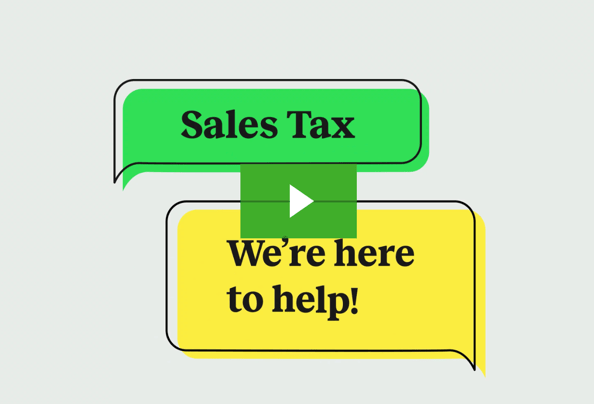Amazon Long-Term Storage Fees: Your Ultimate Guide
by November 1, 2020
This post is brought to you by our friends at RepricerExpress
That dreaded day in mid-February is fast approaching. But, it’s not Valentine’s Day. In fact, it’s the day after, that you should be worried about! On February 15, Amazon will charge sellers long-term storage fees based on inventory that has been in their warehouses for more than six months.
The reason for this?
According to Amazon:
“Inventory that is overstocked or stored indefinitely in our fulfillment centers limits our ability to provide space for fast-selling products customers want. Long-term storage fees help ensure that we can continue to provide high levels of service to all sellers and provide customers with products that they want.”
OK, so do you want the good news or the bad news?
Bad news first — Amazon will charge FBA sellers fees again on August 15 for inventory that has been stored for longer than six months and hasn’t sold. If your goods have been housed by Amazon for more than a year, then you’ll pay twice the amount. Note, these fees are in addition to your monthly storage fees
Now some good news — although they can be a pain, long-term storage fees can be an opportunity for you to do an inventory clean-up and closely examine your product range which should benefit your business long-term.
More good news, we’ve got some awesome tips to help you avoid paying long-term storage fees (more on that later).
Identify what items are going to be charged fees
One thing that we strongly recommend all FBA sellers do this time of year is examine all items that will be charged long-term storage fees on February 15.
You can identify these items using the Inventory Health or Recommended Removals reports.
We recommend checking these reports throughout the year to detect large quantities of slow-moving stock (that hasn’t sold in the last 90 days).
Also, for analysis purposes, you might prefer to download these reports as opposed to reading them online.
What you’ll be charged depends on how long the item has been in Amazon’s fulfillment centers.
- If it’s longer than six months, Amazon currently charges $11.25/cubic foot.
- If it’s longer than a year, Amazon currently charges $22.50/cubic foot.
Note, in the lead up to February 15 and August 15, Amazon will also send you an email with details of what you’ll be charged.
Now that you have an idea what long-term storage fees you might be charged, it’s time to start thinking about how you can get rid of those pesky “sitters” before February 15.
Consider repricing products with storage fees due
Obviously, in an ideal world, you’ll want to get everything sold in a timely manner at a nice margin, before fees kick in. However, in reality, this isn’t always possible.
Therefore, sellers will need to decide if it’s worth selling at a lower margin in order to avoid long-term storage fees.
But, it’s not all bad. In fact, selling at a lower price (on occasion) can be advantageous to your business.
Not only will you avoid long-term storage fees — but you might benefit from buyers making repeat purchases or ordering other items from your product range.
Best-case scenario: you hit the jackpot and end up with a customer for life.
Another benefit (of selling at a more competitive price) is the increased likelihood that they’ll leave you positive seller feedback or a 5-star Amazon product review (which are vital for private label success).
We’re fans of competitive pricing on Amazon all year round but in the lead up to February 15 and August 15, an Amazon repricer really does save you a lot of time and makes managing your inventory prices so much more efficient and effective.
Request removal by Amazon
As well as lowering prices, you might want to consider running a sales promotion through Seller Central (Advertising > Promotions) such as “buy one, get one free” or money off.
You can also use Sponsored Products to create a pay-per-click campaign. If you’ve never set one up before, you might find this guide useful.
If you don’t think you’ll sell the items before 15 February even by lowering prices or running a sale promotion, you have two other options.
Firstly, you can request removal, in other words, ask Amazon to return the items to you. You can then try to sell these products on other channels such as eBay and in some cases, you might even be able to return the goods to the supplier.
Another option is to submit a disposal request to tell Amazon what stock you want to dispose of. However, even with these two options, there is a cost involved per item — with disposal being cheaper than removal.
Avoiding storage fees with automation
Savvy sellers with RepricerExpress are using the Automations feature within the repricing software to auto-detect SKUs that have long-term storage fees due and then moving these SKUs to a more aggressive repricing rule.
For example, an FBA seller using RepricerExpress might set up an automation like this:
- IF FBA long-term storage fees are due,
- AND stock is older than 4 months,
- AND sales are less than X dollars,
- THEN move them to my more aggressive repricing rule.
They know that (in some cases) even by selling stock off at a lower margin, it’s more profitable than holding on to it and paying long-term storage fees.
Think before you ship
Seller tip: If you’re thinking of sending stock to Amazon before February 15 that you think may take longer than six months to sell, then consider postponing shipment so it reaches Amazon after this date.
That way when Amazon calculates long-term storage fees on August 15, they will only charge you fees for any items that were stored by Amazon before February 15.
Final thoughts
Selling by FBA has many advantages for third-party sellers and long-term storage fees are just one of the downsides. If you want to avoid fees, then it’s vital you take the time to analyse each item that you have in your inventory in order to make the best decision possible.
Selling at a lower margin than usual may work out to be better financially if it means avoiding fees and increasing sales. It all depends on what you’re selling, so it’s up to you to crunch those numbers, then make the call.
Consider devising a plan (either manually or automatically through RepricerExpress) to stay on top of slow-moving stock throughout the year to reduce the stress in February and August when hefty storage fees loom.
Many Amazon sellers turn to automation in different areas (pricing, shipping, feedback) of their business to make it run more effectively and save time. An automated repricer will do exactly that by keeping your prices competitive 24/7, 365 days a year and improve your chances of landing the Amazon Buy Box in 2018!.








